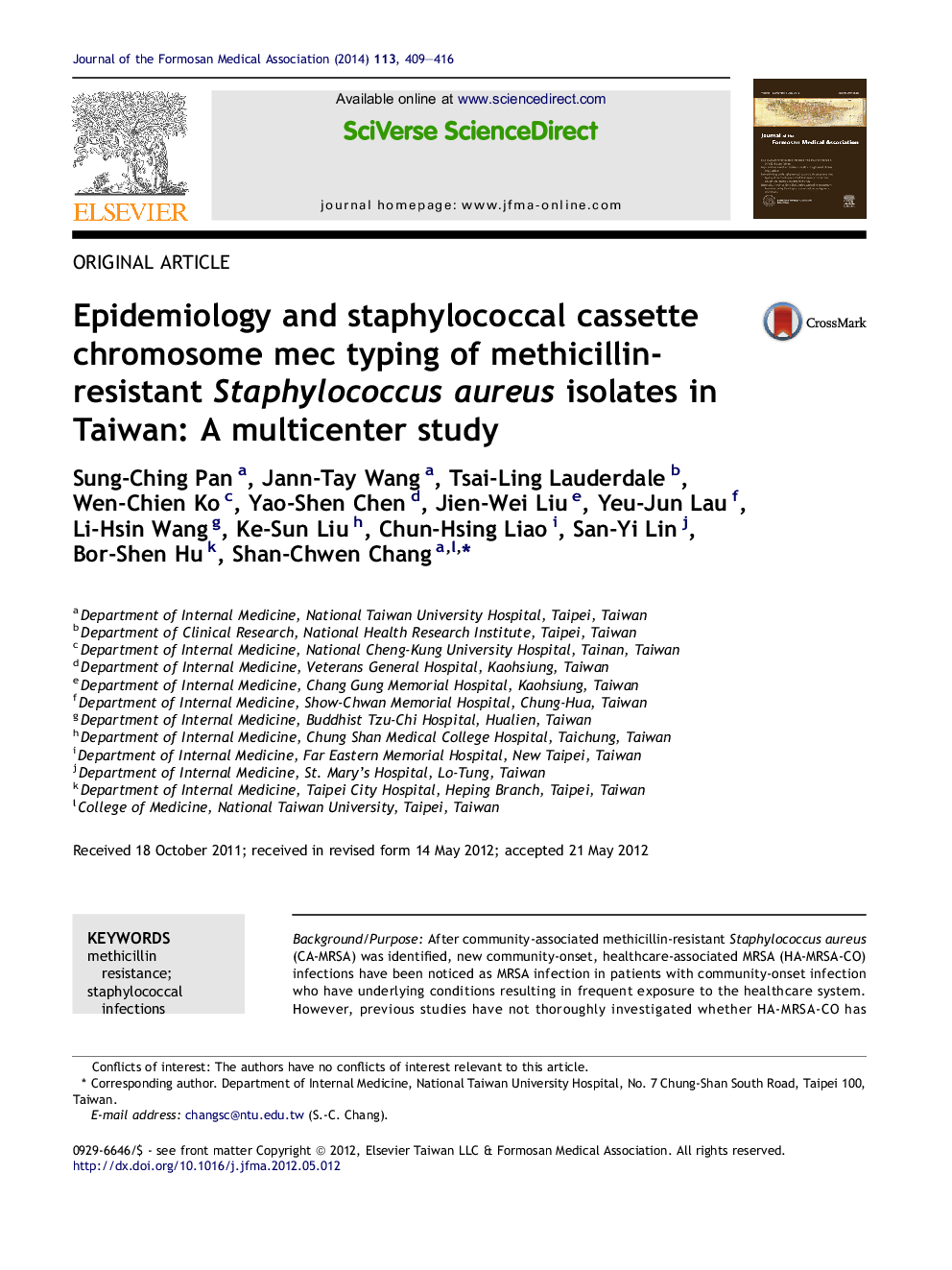| Article ID | Journal | Published Year | Pages | File Type |
|---|---|---|---|---|
| 3478845 | Journal of the Formosan Medical Association | 2014 | 8 Pages |
Background/PurposeAfter community-associated methicillin-resistant Staphylococcus aureus (CA-MRSA) was identified, new community-onset, healthcare-associated MRSA (HA-MRSA-CO) infections have been noticed as MRSA infection in patients with community-onset infection who have underlying conditions resulting in frequent exposure to the healthcare system. However, previous studies have not thoroughly investigated whether HA-MRSA-CO has characteristics resembling those of CA-MRSA or hospital-onset, healthcare-associated MRSA (HA-MRSA-HO) infection.MethodsA multicenter, retrospective study was conducted to analyze the clinical and microbiological data of patients with clinical isolates of MRSA from nine hospitals in Taiwan.ResultsIn total, 203 patients with MRSA isolates, including 27 patients with CA-MRSA (13.3%), 59 with HA-MRSA-CO (29.1%), and 117 with HA-MRSA-HO (57.6%), were studied. Compared to HA-MRSA-HO isolates, the CA-MRSA and HA-MRSA-CO isolates were associated with a higher proportion of skin and soft tissue infections (81.8% and 65.3% vs. 40.5%, p = 0.001 and p = 0.002) as well as lesser rate of resistance to ciprofloxacin (33.3% and 50.9% vs. 74.4%, p < 0.001 and p = 0.002), gentamicin (44.4% and 64.4% vs. 84.6%, p < 0.001 and p = 0.002), and trimethoprim/sulfamethoxazole (33.3% and 42.4% vs. 58.1%, p = 0.02 and p = 0.048), and a lower 30-day all-cause mortality rate (7.4% and 0% vs. 20.9%, p < 0.001). Most of the CA-MRSA isolates were classified as staphylococcal cassette chromosome mec (SCCmec) type VT (11/27, 40.7%), whereas most HA-MRSA-HO isolates were classified as SCCmec type III (66/117, 56.4%).ConclusionThe CA-MRSA, HA-MRSA-CO, and HA-MRSA-HO clinical isolates significantly differed in their clinical presentations and molecular characteristics.
